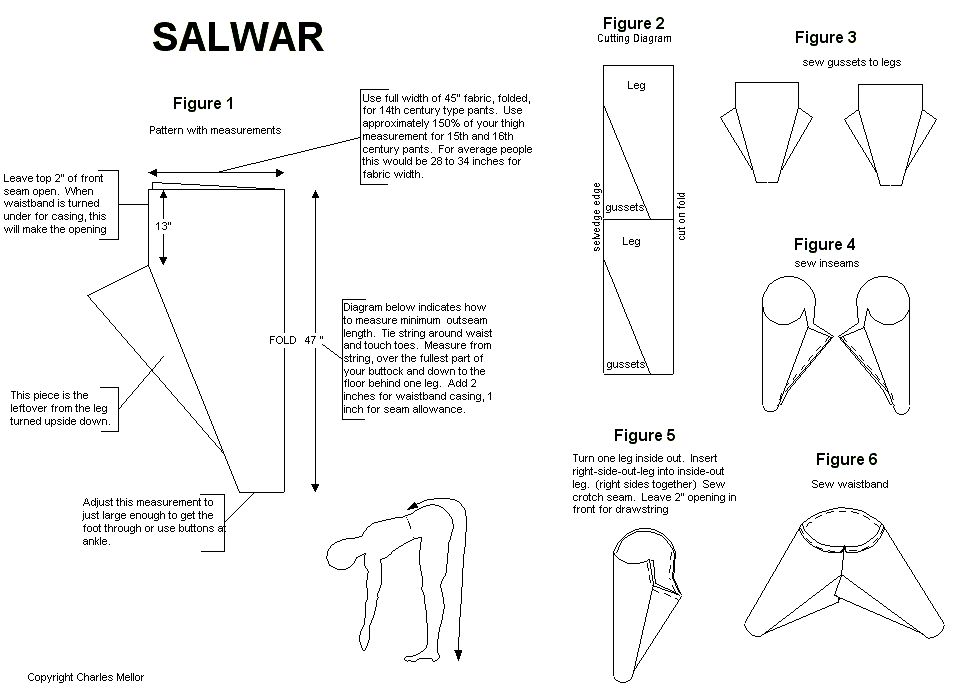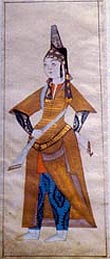Difference between revisions of "Shalwar"
From AmtWiki
(removed conflicting information) |
|||
| Line 1: | Line 1: | ||
| − | |||
| − | |||
These are narrow at the ankles and widen as they go up the thigh. Quite a few have survived from the late 16th and 17th centuries. Shalvar are often made of the same kinds of fabrics as the entari, but they should NOT match." | These are narrow at the ankles and widen as they go up the thigh. Quite a few have survived from the late 16th and 17th centuries. Shalvar are often made of the same kinds of fabrics as the entari, but they should NOT match." | ||
[[Image:Salwar.gif|left|thumb|Pattern for Salwar, by Rashid]] | [[Image:Salwar.gif|left|thumb|Pattern for Salwar, by Rashid]] | ||
In some of the accompanying pictures you can see that some shalvar are made much longer than the actual woman's leg, and of very soft fabric that pools around the leg."[[Image:LadyinGold.jpg.jpeg|frame|Painting of a lady wearing [[Shalwar]] under her [[Entari]] note how the patterns of each major garment clash.]] | In some of the accompanying pictures you can see that some shalvar are made much longer than the actual woman's leg, and of very soft fabric that pools around the leg."[[Image:LadyinGold.jpg.jpeg|frame|Painting of a lady wearing [[Shalwar]] under her [[Entari]] note how the patterns of each major garment clash.]] | ||
| − | + | This information taken from [http://home.earthlink.net/~lilinah Dar Anahita], the website of Urtatim al-Qurtubiyya. Thanks Urtatim! | |
| − | |||
| − | |||
| − | |||
| − | |||
===Links=== | ===Links=== | ||
| Line 15: | Line 9: | ||
*[http://www.geocities.com/kaganate/pants1.html How to make shalvar by Rashid, on the Red Kaganate site] | *[http://www.geocities.com/kaganate/pants1.html How to make shalvar by Rashid, on the Red Kaganate site] | ||
[[Category:How To]] [[Category:Garb]] [[Category:Ottoman Garb]] | [[Category:How To]] [[Category:Garb]] [[Category:Ottoman Garb]] | ||
| − | |||
Revision as of 22:21, 22 September 2009
These are narrow at the ankles and widen as they go up the thigh. Quite a few have survived from the late 16th and 17th centuries. Shalvar are often made of the same kinds of fabrics as the entari, but they should NOT match."
In some of the accompanying pictures you can see that some shalvar are made much longer than the actual woman's leg, and of very soft fabric that pools around the leg."
This information taken from Dar Anahita, the website of Urtatim al-Qurtubiyya. Thanks Urtatim!

